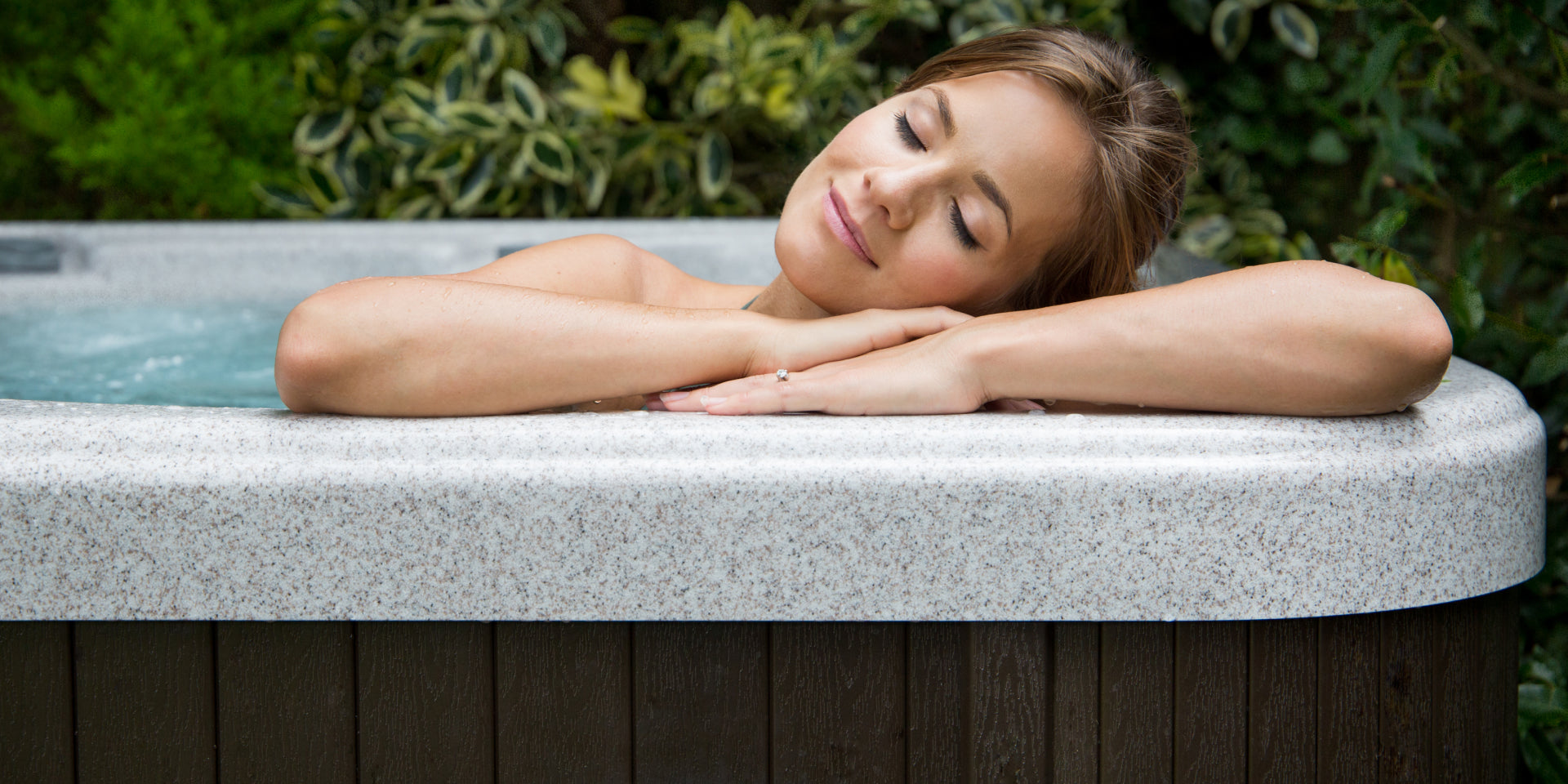
In the realm of relaxation, Riptide hot tubs aren't just about luxury—they're a testament to sustainable indulgence. Imagine a spa experience that not only rejuvenates your senses but also respects the environment and your wallet. That's the Riptide promise.
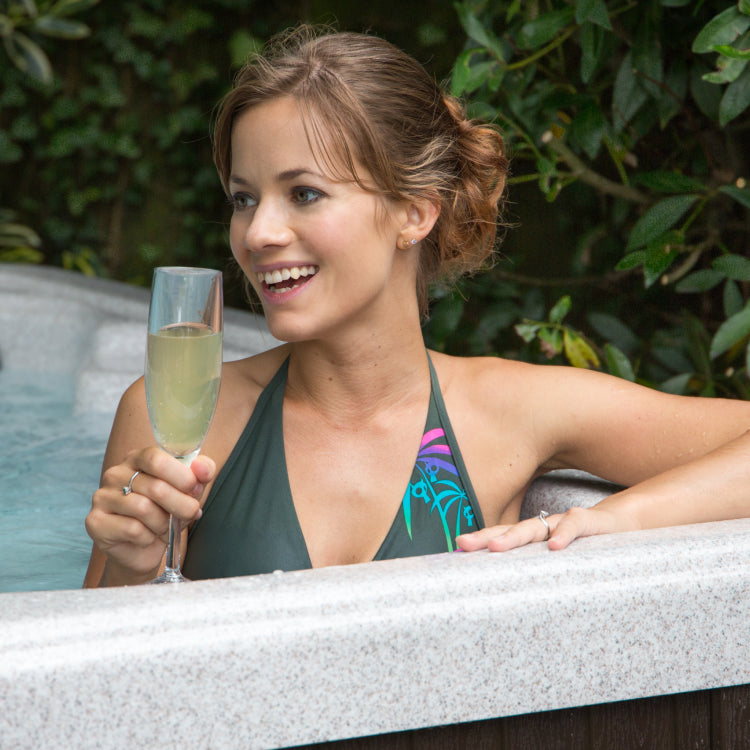
In clinical studies patients who use hot tubs lost an average of 3.5 pounds in weight without any new diet or physical exercise programmes. In short, the weight loss resulted from the hot water massage simulating the effects of exercise, on the muscles.
Stress results in muscle tension, headaches, fatigue and soreness. Regular hot tub use, through a combination of buoyancy, heat and massage relieves tension and stress. Buoyancy eases pressure in joints and muscles, while heat increases blood flow to muscles and accelerates healing. Additionally, hot tub jets provide therapeutic massages, stimulating the release of endorphins, which are the body’s natural painkiller.
A recent study from New England Journal of Medicine found that bathing in a hot tub simulates the beneficial effects of exercise. The result is that patients with type 2 diabetes who soak in a hot tub for 30 minutes a day, 6 days a week for 3 weeks, experience a reduction in blood sugar levels by an average of 13%.
For people with arthritis, the Arthritis Research Campaign recommends using
a hot tub as an excellent way to apply heat to arthritic joints.
Benefits of a soak in a hot tub can include muscle relaxation, decreased pain and joint stiffness and greater ease when performing exercise and daily activities.
No more counting sheep! According to the National Sleep Foundation, 30 million Brits suffer from mild to chronic insomnia and other sleep disorders.
A study in the journal ‘Sleep’ showed that soaking in a hot tub prior to bedtime will not only help you fall asleep, but will provide a deeper, more relaxing sleep as the body cools.
A recent study from the Mayo Clinic found that relaxing in a hot tub can be beneficial for heart disease patients. The study showed that relaxing in a hot tub is less stressful on the heart and more beneficial than working out on an exercise bike! The study also demonstrated that soaking in the hot tub for as little as 15 minutes will lower blood pressure.
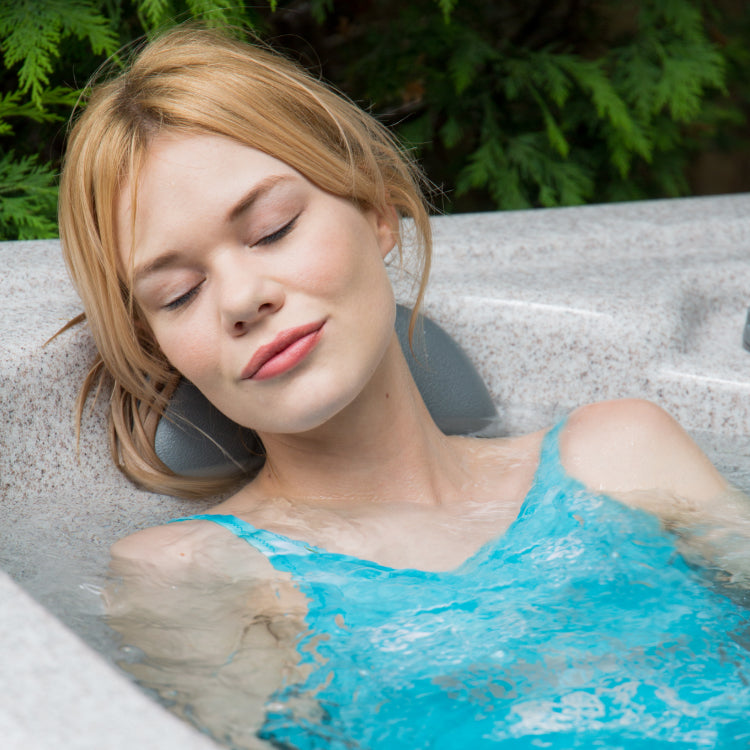
Would you buy a car without test-driving it first? Only a trial dip in our hot tubs can help you decide which model is right for you and your family. Evaluate seat shape and depth, test the massage effect, and feel the water. Just bring towels and your swimwear – we'll make sure the pool is ready for you.
In our showrooms, you'll find suitable models for test swimming. Let our TÜV-certified experts guide you and draw inspiration from customer examples for potential garden designs – all complete with an exclusive sliding cover.
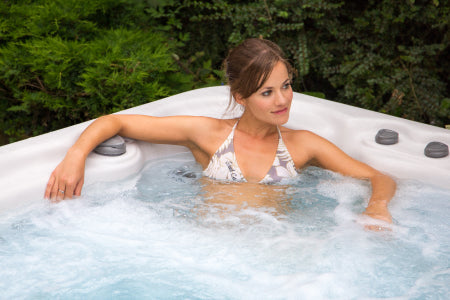
Be at your best every day by making a spa a part of your daily ritual. Experience relief of stress and tension from sore muscles and emotional and mental benefits. Immersed in warm water, you can disconnect and emerge revitalised.
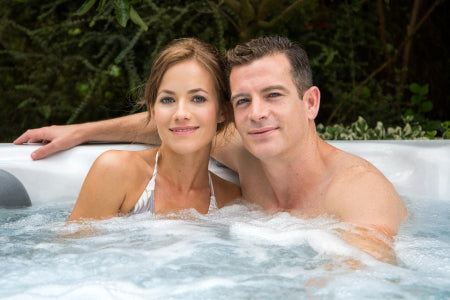
Spend time together,immersed in warm water. The spa becomes a private and safe place where people can relax, let their guard down, and enjoy meaningful conversation and special moments with loved ones.
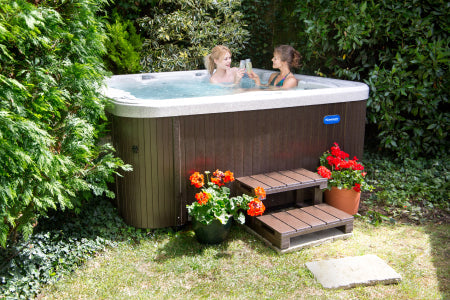
Take a pause and appreciate beautiful sunsets,starry nights, falling snow, changing leaves and much more. With a hot tub, you have a private retreat steps away from your door. Surrounded by nature, you can take in the beauty we often take for granted.
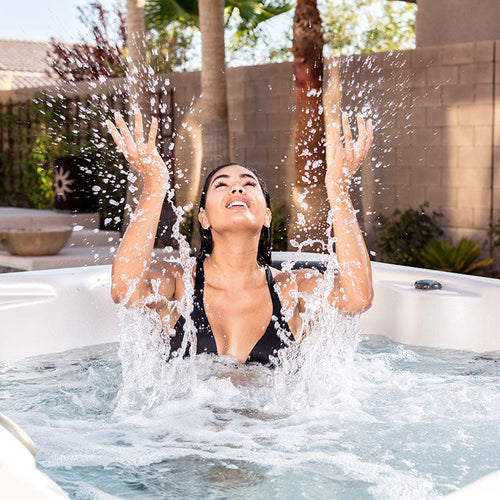
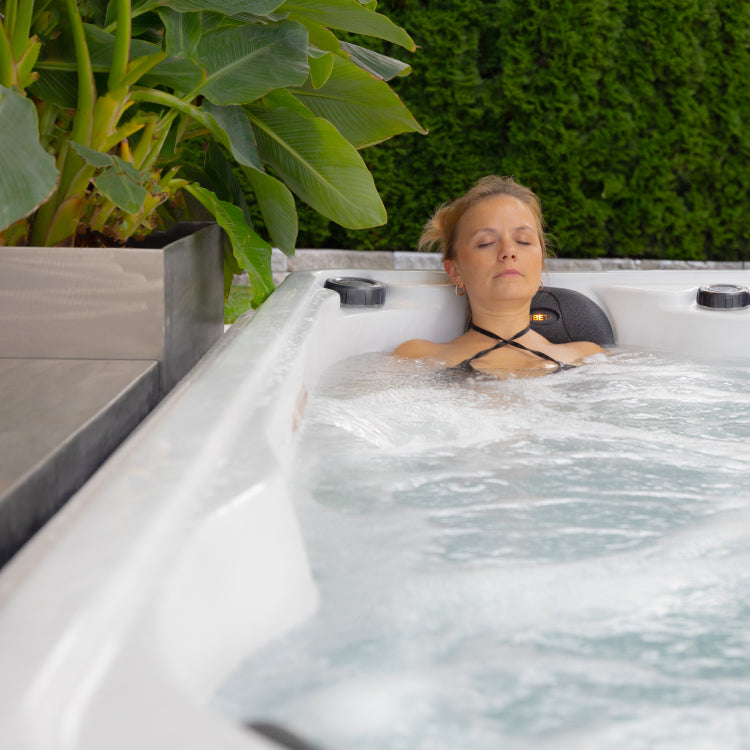
Energy-Saving Pools - It's all about the best insulation and efficient circulation pumps. Premium hot tubs from specialist retailers are much more cost-effective in ongoing operation and over the years than cheap pools! A standout feature of our premium pools is the low energy costs, made possible through technical innovation. Despite rising electricity prices, the monthly energy costs are currently only about £60 to £70. Our manufacturer has been a market leader for over 40 years and develops outstanding energy-saving pools without compromising on powerful massage performance.
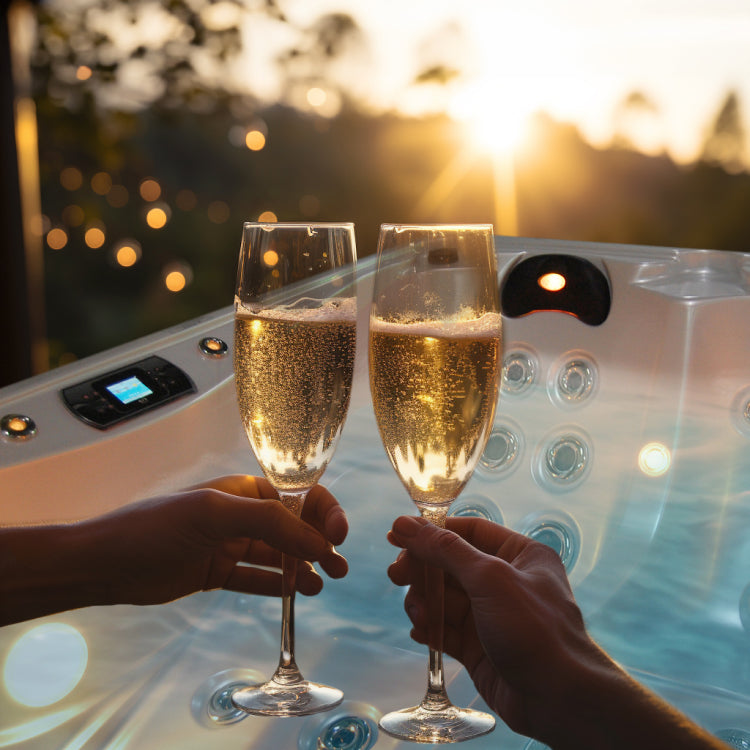
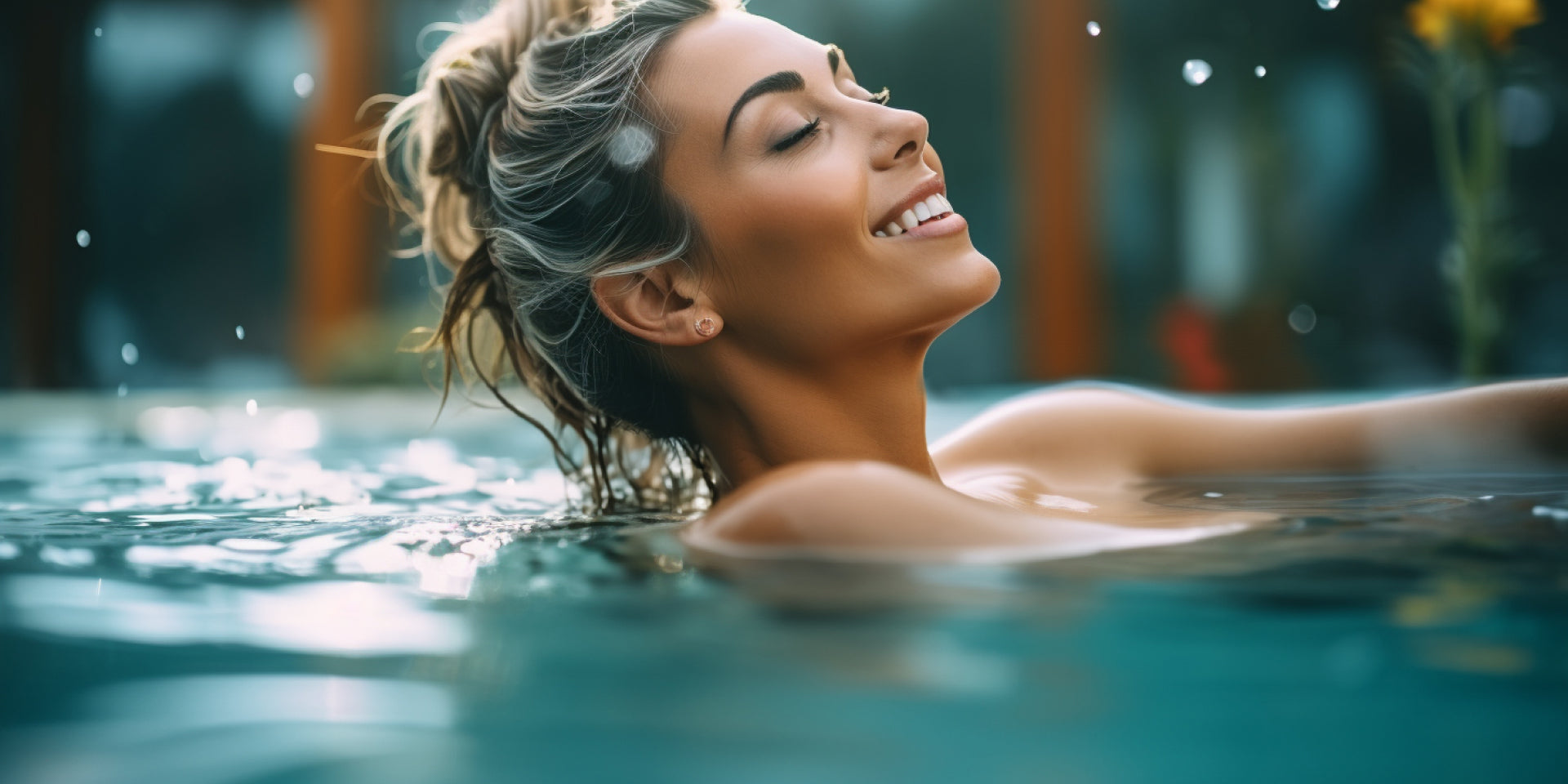
Stress relief Stress results in muscle tension, headaches, fatigue and soreness. Regular Hot Tub use, through a combination of buoyancy, heat and massage relieves tension and stress. Buoyancy eases pressure in joints and muscles, while heat increases blood flow to muscles and accelerates healing. Additionally, Hot tub jets provide therapeutic massage, stimulating the release of endorphins, which are the body’s natural painkiller. Minimise the Pain of Arthritis Benefits of a soak in a hot tub can include muscle relaxation, decreased pain and joint stiffness and greater ease when performing exercise and daily activities. Lower Diabetic Blood Sugar Levels A study by the New England Journal of Medicine found that bathing in a hot tub simulates the beneficial effects of exercise. The result is that patients with type 2 diabetes who soak in a hot tub for 30 minutes a day, 6 days a week for 3 weeks, experience a reduction in blood sugar levels by an average of 13%. Promotes Weight Loss In clinical studies patients who used hot tubs lost an average of 3.5 pounds in weight without any new diet or physical exercise programmes. In short, the weight loss resulted from the hot water massage simulating the effects of exercise, on the muscles. Sleep More Soundly No more counting sheep! According to the National Sleep Foundation, 30 million Britons suffer from mild to chronic insomnia and other sleep disorders. A study in the journal ‘Sleep’ showed that soaking in a hot tub prior to bedtime will not only help you fall asleep, but will provide a deeper, more relaxing sleep as the body cools. Lower Blood Pressure A recent study for the Mayo Clinic recommended that relaxing in a hot tub can be beneficial for heart disease patients. The study showed that relaxing in a hot tub is less stressful on the heart and more beneficial than working out on an exercise bike! The study also demonstrated that soaking in the hot tub for as little as 15 minutes will lower blood pressure. Be together - Spend time together, immersed in warm water. The spa becomes a private and safe place where people can relax, let their guard down, and enjoy meaningful conversation and special moments with loved ones. Be outside - Take a pause and appreciate beautiful sunsets, starry nights, falling snow, changing leaves, and much more. With a hot tub, you have a private retreat steps away from your door. Surrounded by nature, you can take in the beauty we often take for granted. Be yourself - Be at your best every day by making a spa a part of your daily ritual. Experience relief of stress and tension from sore muscles and emotional and mental benefits. Immersed in warm water, you can disconnect and emerge renewed.
Read articleIndoor hot tubs are (as can be seen from their name) designed for installation in the bathroom. This means that they are connected directly to a water supply and drainage system. When it is used, the tub is filled with water and then the water is drained again. The massage options are limited in terms of spraying and ergonomics of the tub shell. Outdoor hot tubs, American hot-tubs, hottubs, etc. are operated like an all year-round pool, the water remains in the pool and is always ready for a bath. An outdoor hot tub can of course also be set up indoors, i.e. in the wellness room or living room, provided that it is possible to bring it in. Indoor and outdoor hot tubs are therefore not really comparable, both have different functions, effects and requirements. One thing is certain, if you are using an outdoor hot tub the use of your indoor hot tub in the bathroom is reduced to a nice way to display decorative material.
The operation of a hot-tub is associated with the following costs: daily energy and electricity costs, periodic costs for water when changing the water.
Monthly expenses for water treatment and carecosts for replacing the filter cartridges every 2 years, costs for replacing the cushions and the cover after 3 to 6 years. Whilst there is a financial expenditure for water for the occasional replacement of the filter cartridges or for renewing the cushions or the cover is kept within limits and certain costs do not occur regularly. The question arises: How much electricity does a hot tub actually need? The well-known "1£/day" answer has been circulating in the industry for years despite electricity price increases. The answer is simple and easy to understand, but it needs to be looked at in a different way.
Considerations that influence energy consumption:
Heating Performance Topic: A 1000W heater may, in theory, consume less electricity, but it takes correspondingly longer to heat. Thus, with more powerful heaters, the electricity consumption remains the same, but they also ensure that the water temperature doesn't drop during your bath.
Air Jets Topic: Air jets cool the water when in operation, offer no massage value, and therefore result in higher heating costs.
Cover Topic: Heat rises. This means the stronger the cover, the lower the energy consumption. Continuous tabs along the seam are crucial, as this seam represents a weak point in the cover. A seam without gaps may require more precise placement of the cover at the curves, but it ensures a more accurate fit and thus the best insulation.
Insulation Topic: On one hand, special foils along the inside of the cladding reflect heat inwards and cold outwards. On the other hand, many pools are foamed – but the question is, how much? Premium pools have full foam insulation, which achieves optimal insulation and also ensures quiet operation and secures hose lines.
Circulation Topic: Which pump is responsible for the permanent circulation of the water? A two-stage pump with a power consumption of 400 to 700 kW/h or a dedicated circulation pump with less than 100W? It should also be questioned whether this circulation pump is programmable or runs permanently for 24 hours.
Pump Performance Topic: A 3 HP massage pump consumes slightly more electricity than a 1.5 HP pump. However, considering the time factor, this difference in consumption is negligible. The possibility of a powerful massage from a strong massage pump is therefore more significant.
Internet, trade shows, showrooms, personal references and experiences – newcomers to the hot tub market have various avenues to gain an overview of models and their pricing structures. Model images are often interchangeable, and at first glance, it's often hard to discern how the price is determined.
Segment 1 up to approx. £5,000 – served by DIY stores, retail chains, and online companies with Asian products.
Segment 2 up to approx. £7,500 – catered for by installation companies, specialist retail chains in pool construction, and also specialised retailers.
Segment 3 up to approx. £12,000 – the main segment for specialist retailers.
Segment 4 over £12,000 – a specialist segment of the retail trade.
Insulation: Foil insulation vs. Foam insulation vs. Combination of both methods
Jetting: Type and number, functionality and arrangement
Circulation System: Two-stage pump vs. Dedicated circulation pump
Disinfection and Water Quality: Ozone systems, saltwater systems vs. Chlorine addition
Massage Pumps: Number and power
Materials: Metal frame vs. Pressure-treated hardwood / Acrylic thickness
Craftsmanship and Detail Quality
Features: Lighting, water, and sound options
Warranty Services
In summary, the ongoing operation causes a significantly higher cost.
Quality, craftsmanship, massage or operational comfort, and especially energy efficiency are reflected in the manufacturing effort, production, and selling price. "The smaller the pool, the more cost-effective" – doesn't always hold true. A look behind the pool cladding often explains many differences that weren't immediately apparent at first glance.
Clear answer – Yes!
A sheltered spot near the house, especially protected from the wind, is ideal for this. Without a roof over the pool, even at -20°C, you have an unobstructed view of the stars and can enjoy your private spa. Even in the height of summer, a whirl in the evening in 36-degree warm water is an absolute relaxation delight. Our hot tubs are designed for all year-round use, meaning they come with full foam insulation to minimise electricity costs during the colder months. They also boast a powerful 3 kW heater, ensuring that during a longer soak in winter, the water never cools down and can even gain a degree or two in temperature if needed.
The number of seats depends on the size of the hot tub and the chosen size, in turn, as well as the local conditions. More massage spots in a tub doesn't necessarily mean more space for guests. Generally, when determining the size of the hot tub, one starts with the experience in a standard bathroom bathtub. Following that, there's the slightly larger three-seater – usually with a lounger, but with significantly more space than a regular bathtub for oneself and one's partner. However, the true hot tub sensation is only felt when stretching out freely in the corner spots of the tub, letting the jets massage your shoulders. The buoyancy of the water helps you stretch and feel your body extensively. This makes the hot tub experience what it should be: fun and relaxing. The often-assumed notion that the smaller the hot tub, the cheaper it is, is fundamentally incorrect. The price primarily depends on the features, jetting and motorisation, and the quality of insulation and craftsmanship.